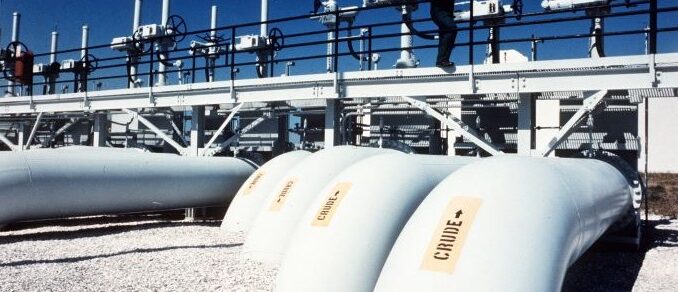
In a move that underscores the shifting dynamics of global energy alliances, the United States and Pakistan have inked a significant trade and energy pact aimed at unlocking Pakistan’s untapped oil reserves. Announced by President Donald Trump via his Truth Social platform, the agreement not only promises to bolster Pakistan’s domestic energy production but also includes a pointed remark directed at India, hinting at potential future oil exports from Pakistan to its neighbor.
This development comes amid broader discussions on innovative energy models, including the emerging concept of Energy as a Service (EaaS), which could reshape how nations approach energy exports and management.
The Core of the U.S.-Pakistan Energy Pact
The deal focuses on collaborative efforts to develop Pakistan’s “massive oil reserves,” as described by Trump. In his post, the President stated, “We have just concluded a deal with the country of Pakistan, whereby Pakistan and the United States will work together on developing their massive oil reserves. We are in the process of choosing the Oil Company that will lead this partnership.”
While details remain sparse, the agreement extends beyond energy to include tariff reductions on Pakistani goods entering the U.S., dropping from 29% to 19%. This provides much-needed economic relief for Pakistan, a key player in global textile exports.
Pakistan’s Deputy Prime Minister Ishaq Dar confirmed the pact on X (formerly Twitter), though no specifics on implementation—such as financing, technology transfers, or equity stakes—have been disclosed.
The Pakistani finance ministry hailed it as “the beginning of a new era of economic collaboration, especially in energy, mines and minerals, IT, cryptocurrency, and other sectors.”
However, challenges loom: No U.S. company has yet publicly shown interest, and Islamabad has not outlined a bidding process or timeline for selecting operators. Pakistan’s energy landscape makes this deal particularly timely. The country imports over 85% of its crude oil, spending $11.3 billion in the fiscal year ending June 2025, leaving it vulnerable to global price fluctuations and foreign exchange crises.
Proven conventional oil reserves are estimated between 234 million and 353 million barrels, with daily production hovering around 60,000 barrels, significantly lower than regional counterparts like India.
Security concerns, including terrorism risks tied to projects under the China-Pakistan Economic Corridor (CPEC), have deterred foreign investment, as evidenced by Shell’s exit in 2023 and a failed 2023 auction for exploration blocks.
Despite these hurdles, recent domestic successes, such as the Makori Deep-03 well producing 22.08 million standard cubic feet of gas and 2,112 barrels of condensate daily, signal potential.
Pakistan is also pursuing other partnerships, including a memorandum with Turkey for offshore exploration.
Trump’s Geopolitical Jab at India
Adding a layer of intrigue, Trump’s announcement included a subtle dig at India: “Who knows, maybe they’ll be selling Oil to India someday!”
This remark appears designed to pressure New Delhi over its continued imports of discounted Russian crude, amid U.S. efforts to isolate Moscow economically. Trump has previously threatened tariff hikes on India for maintaining these ties, positioning the Pakistan deal as a potential alternative supply route in the region.
The comment highlights the geopolitical undercurrents of energy diplomacy, where alliances can shift rapidly. If Pakistan ramps up production, it could indeed emerge as an exporter, altering South Asian energy flows and reducing reliance on traditional suppliers.
Broader Implications for Global Energy Markets
This pact could help Pakistan mitigate its import dependency, potentially stabilizing its economy and influencing global oil dynamics.
However, realization depends on overcoming political instability and security issues, which have ballooned external debt to $100 billion under CPEC.
For the U.S., it represents an opportunity to expand influence in Asia’s energy sector, countering China’s dominance.
Exploring Energy Export as a Service: A Modern Twist
In the context of such international deals, the concept of “Energy Export as a Service” (often aligned with or evolving from Energy as a Service, or EaaS) offers an innovative lens. EaaS is a business model where customers outsource energy management, paying subscription fees instead of upfront capital for efficiency upgrades, renewables, or infrastructure.
This shifts energy from a commodity to a managed service, enabling broader access without heavy investments.
Applied to exports, models like “Smart Renewable Energy Export” programs—such as those by Hawaiian Electric—allow producers to export surplus energy (e.g., from solar or batteries) to grids for credits, with no size limits on projects.
Companies like AlphaStruxure extend this by designing, owning, and operating on-site energy systems as a service.
For oil-rich but capital-constrained nations like Pakistan, an “Energy Export as a Service” approach could involve U.S. firms providing development expertise, technology, and even export logistics as a bundled service, financed through future revenues.
This mirrors EaaS benefits: reduced barriers to entry, risk-sharing, and accelerated deployment of low-carbon or traditional energy resources.
In the U.S.-Pakistan deal, elements of this model are evident, with the U.S. facilitating development without immediate Pakistani outlays, potentially paving the way for exports to markets like India.Critics of EaaS note dependency on service providers and potential long-term costs, but proponents argue it democratizes energy access, especially in emerging markets.
As global energy transitions accelerate, integrating export-focused EaaS could transform deals like this into sustainable, service-oriented partnerships.
Looking Ahead
The U.S.-Pakistan oil pact, laced with Trump’s India jab, signals evolving energy geopolitics. While immediate impacts may be limited by execution challenges, it opens doors to innovative models like Energy Export as a Service, blending traditional resource development with modern business strategies.
Energy News Beat will continue monitoring developments in this space, where diplomacy, economics, and innovation intersect.
Is Oil & Gas Right for Your Portfolio?
Crude Oil, LNG, Jet Fuel price quote
ENB Top News
ENB
Energy Dashboard
ENB Podcast
ENB Substack






